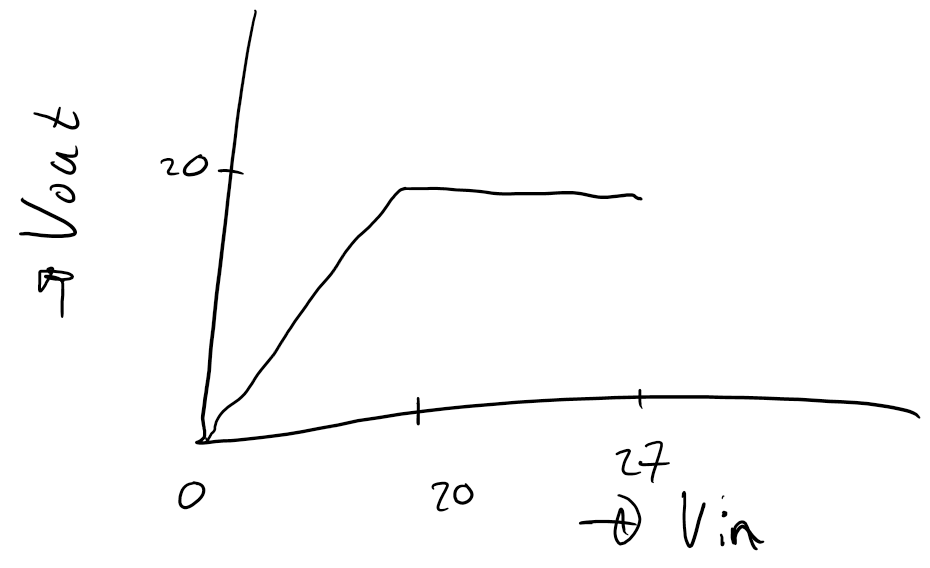I am searching for a neat solution for an input voltage limiting circuit.
Situation:
I have a circuit with an input voltage range from 6 V to 20 V at 3 A peak (the load), however my source can be anything between 7 V and 27 V.
I am looking for a circuit in between that passes through any input voltage between 7 V and 20 V, and clamps any input voltage between 20 V and 27 V to the 20 V maximum of my load. (dissipating 7V*3A = 21 W)
Desired behavior of the 'questionmark' - circuit:

The solutions that already found:
- Using a resistor and 20V Zener diode --> Is not preferred because of the losses in the resistor which I don't want if my input voltage is below 20 V, and the losses in the Zener when my load current is near zero...
- Using a 6V LDO --> Does not satisfy the requirements, if I do have a 20V input available, I want to 'use' it.
- Using a 20V linear regulator --> Unspecified behavior when the input voltage is below 20V...
- Using a Zener with a Mosfet as in https://www.circuitlab.com/circuit/9sj5kb/zener-mosfet-regulator/ --> Simulation reveals that when the input voltage is below the zener voltage, the output is ~half the input voltage, desired behavior would be Vin = Vout.

